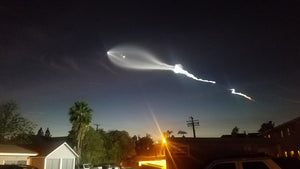October-Explore M52, the Blue Snowball, and Owl Nebula
Owl Nebula
One of the most renowned planetary nebulae in the northern sky is M97, also known as the Owl Nebula. It was first spotted by Pierre Méchain on February 16, 1781, approximately 2.5 degrees southeast of Merak, which is part of the constellation Ursa Major. Méchain remarked that it was difficult to discern with illuminated crosshairs, and Messier agreed, noting its faintness. The challenge lies not so much in its brightness, which is around magnitude 9.8, but in the fact that its dim light is spread across nearly 3.5 arcminutes of the sky. Despite these difficulties, the Owl Nebula remains one of the most sought-after planetary nebulae by observers today. Its allure stems from the challenge it presents: observers are literally invited to see eye-to-eye with this enigmatic celestial object.
M52
Messier 52 (M52) is a beautiful open star cluster located in the northern constellation Cassiopeia, close to the Milky Way's plane. This cluster lies approximately 5,000 light-years away and is estimated to be around 35 million years old. With around 200 stars, M52 contains a range of magnitudes, dominated by hot, young blue stars but also featuring several yellow giants. Its apparent magnitude is around 7.3, making it easily visible in binoculars or a small telescope under dark skies.
M52 is best observed during the autumn months when Cassiopeia is high in the northern sky. A telescope at medium magnification reveals the cluster’s dense core and outer scattering of fainter stars. For observers in areas with dark skies, M52 can be spotted even with the naked eye. Its position near the rich star fields of the Milky Way provides a stunning backdrop for observers.
Blue Snowball Nebula
The Blue Snowball Nebula (NGC 7662), is a planetary nebula located about 2,500 light-years from Earth. Nebulae like these represent a stage in evolution that stars like our Sun undergo when they run out of fuel. When observed with a magnification of 100x, it appears as a diminutive circular disc with a subtle blue hue, similar to a planet. However, increasing the magnification to over 200x reveals its elongated shape when viewed through larger telescopes. Higher magnification unveils the presence of concentric rings surrounding a darker central region, with shades of blue and green creating a captivating and intricate celestial display.







